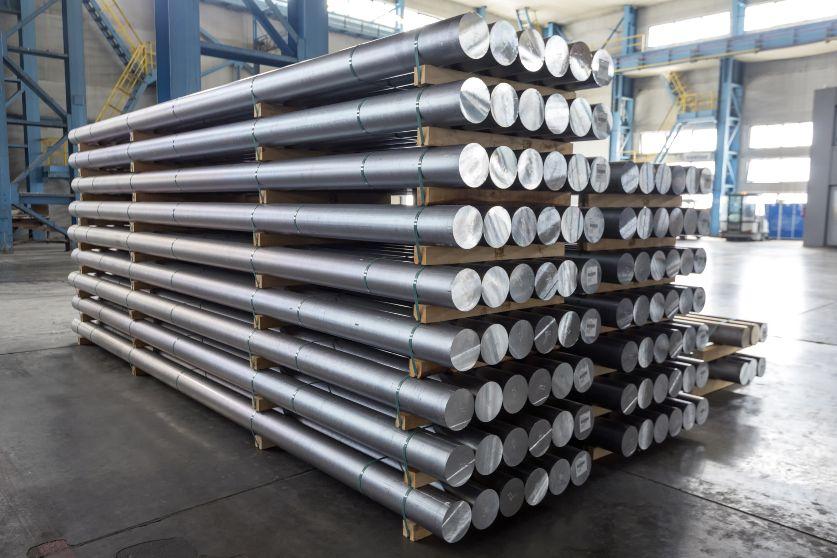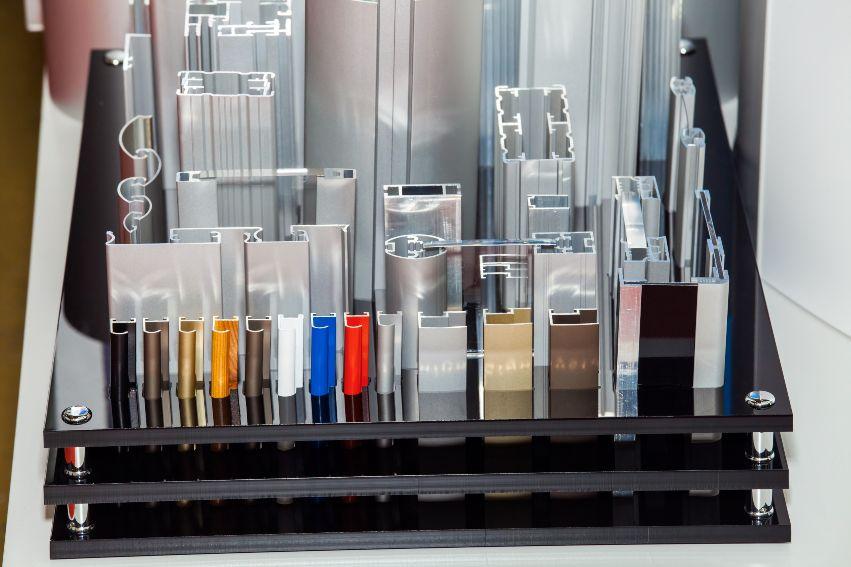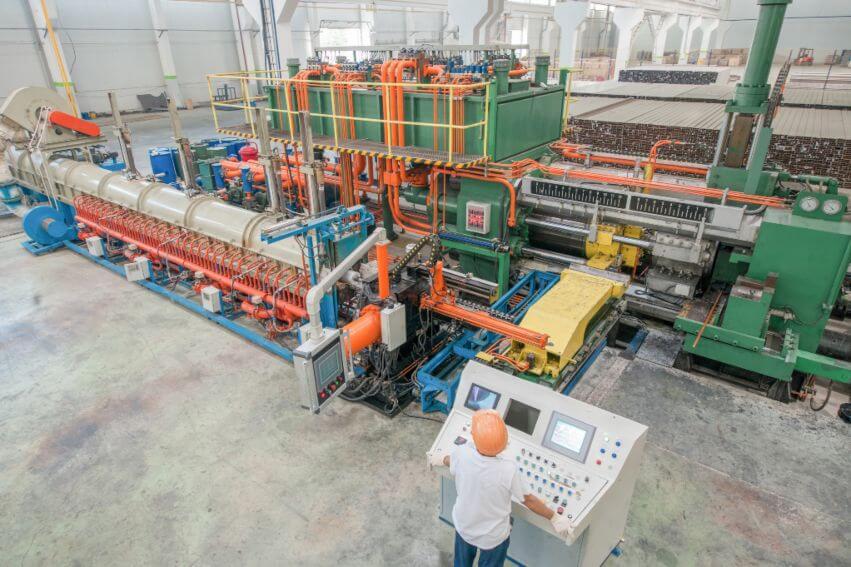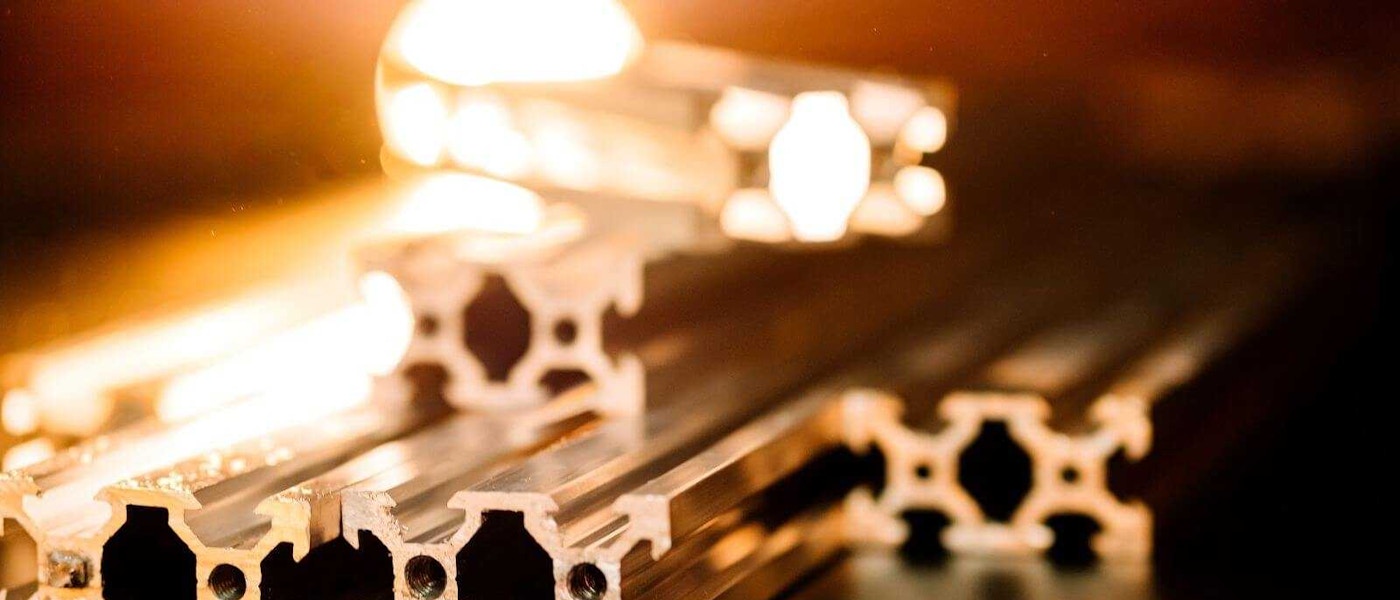Extrusion is the industry term used to define the material shaping process. In extrusion, material is forced through a specifically shaped die to obtain an elongated piece in the shape of the die.
Imagine Play-Doh, and how the solid ‘dough’ mass is filtered through shaped holes to create long, thin sections. That is the end-product of extrusion, but to achieve this on an industrial scale with products of varying chemical composition requires a great deal more nuance in its preparation and execution.
In an aluminium extrusion press, pressure is placed upon the aluminium billet by a ‘ram’ with a dummy block attached to a ram stem. The size of the press will determine the dimensions of the extrusion that can be made.
The extrusion dimensions are defined by the length of the longest cross dimensional section which fits into a ‘circumscribing circle’ - the technical term for the smallest circle that would completely enclose the cross-section of the extruded shape.
The primary factor in this process is temperature, this is what dictates the level of product malleability and the material toughness of the end product.
Click here for more on the grades of aluminium suitable for extrusion.

[Above] Aluminium billet ready to be processed
Aluminium billet is heated to between 800°- 925° F. Once the desired temperature is achieved, the billet is transferred to the loader and a thin layer of lubricant or ‘smut’ is added to both billet and ram. This acts as a parting agent which keeps the two parts from sticking to each other.
The billet is moved to the cradle. The ram applies pressure to the dummy block, pushing the billet into the container
The billet is then forced towards the chosen die, narrowing and widening as it is squashed against the container walls until it reaches the die itself. At this point, the aluminium is pushed through the die.
Liquid nitrogen is used within the die to cool things down which aids the longevity of the die opening while also creating an inert atmosphere, keeping oxides from forming on the extruded material.
In some specific cases, nitrogen gas may also be used, which still creates an inert atmosphere but does not have a cooling effect.
The extruded metal begins to emerge from the die opening in the desired shape. As the metal is squeezed out, its temperature is recorded. This is valuable information for knowing an optimal press speed, and dependent on the alloy used, varying exit temperatures will be optimal.
In the case of alloys 6063, 6063a, 6101, and 6463, the desired exit temperature is 930° F as a minimum. Whereas with alloys 6005a, and 6061, a minimum of 950° F is preferred.
The extrusion then continues its journey to the leadout table, and then to the ’puller’ - an integral part of the process used to guide the metal down the runout table. When this ‘pulling’ takes place, the extruded metal is cooled by a series of fans along the whole length of the runout and cooling tables.
A slight variation exists in the case of alloy 6061 which is both air quenched and water quenched.
In quenching, the temperature of the extrusion is reduced to ambient levels at a controlled rate. This is achieved by forced air convection or soft industrial water. Water inherently cools at a faster rate, producing a harder product, but must be meticulously controlled as cooling too rapidly can crack or distort the aluminium profile.
By monitoring the cooling rate of the extrusions as they move through the quench - a finished product with the desired properties is consistently achieved and any structural damage to the profile from cooling it too quickly is negated.

[Above] Different samples of aluminum profile
Not all the billet is used - this non-used material, known as the butt contains oxides from the skin of the billet so is sheared off and removed. At the same time, a second billet is loaded to weld to the previously loaded (now extruded) billet.
Once all desired billets have been loaded and welded and the extrusion reaches the desired length, it is then cut using a profile saw, or ‘shear’.
After cooling, the billet is then moved to the ‘stretcher’. This apparatus stretches the extrusion and creates ‘work-hardening, the molecular re-alignment needed to increase the hardness and strength of the material.
After stretching, extrusions are transferred to a saw table and sliced to desired lengths.
Once cut, extrusions are loaded into a transportation device and placed into age ovens. Heat treating or ageing by these artificial methods hardens the aluminium by speeding the ageing process, this is done in a temperature-controlled environment for a preset time.

[Above} aluminium extrusion press
To describe how the extrusion press works, we first need to identify the component parts of the press:
Table located at the exit of the press. This helps to guide and support the extrusions. It includes:
There are two types of extrusion processes:
Temper is the industry term given to the combined elements of hardness and strength created by mechanical and/or thermal treatments.
Aluminium temper is tested using various measures to measure its mechanical properties. All are required to satisfy compliance standards of the alloy and temper properties.
Most shapes can be extruded, but there are limiting factors. These include size, alloy, extrusion ratio, tongue ratio, tolerance, finish, factor, and scrap ratio. If a part doesn’t fall within these specifics, it won't be extruded successfully. Once the above requirements are satisfied other factors also need to be modified including extrusion speed, the temperature of the billet, and extrusion force.
Generally, extrusion speed will vary with the metal temperature and the pressure within the container, as well as the shape being extruded. Lower extrusion temperatures will usually produce shapes with better quality surfaces and more dimensional accuracy. Lower temperatures require higher pressures. An ideal billet temperature is one that provides good surface and tolerance conditions, while at the same time, creating a short time cycle for the process. The ideal is billet extrusion at the lowest temperature which the process will permit. One exception to this is the so-named ‘press-quench’ alloys, most of which are in the 6000 series.
With these alloys, solution heat-treat temperatures must be retained within a range of 930° - 980° F at the exit of the die to create the optimum mechanical properties. At extremely high billet temperatures and extrusion speeds, metal flow becomes more fluid. The metal will seek the easiest route so will tend to fill the larger voids in the die face, and resist entry into more constricted areas. Under these conditions, shape dimensions tend to fall below allowable tolerances, particularly those of thin projections or ribs.
Another possible result oftensile excessive extrusion temperature and speed is the shearing of metal at sharp corners or thin edges. This happens as a result of the metal's decrease in tensile strength at excessively high temperatures. At such speeds and temperatures, contact between the metal and the die bearing surfaces is likely to be incomplete and uneven, and any waves and twists in the shape are often intensified.
As a general rule, the higher an alloy's mechanical properties, the lower the rate of extrusion. Greater friction between the billet and the liner wall means it often takes longer to start extruding the billet.
Extrusion Ratio and Difficulty Factor are two further considerations that must be taken into account.
The extrusion ratio of a shape is a clear indication of the amount of mechanical working that will occur as the shape is extruded.
Difficulty factor is used to determine a part's extrusion performance level.
Whether you need stainless steel, copper or aluminium extrusion, our unrivalled commitment to customer service, extensive technical experience and logistical expertise ensure we are perfectly equipped to respond to a diverse range of requirements.
We manage your supply from supplier selection through to processing, packaging, stockholding and delivery.
We are dedicated to providing our customers with exceptional service via a supply chain partnership that offers reliable service capability, technical knowledge, value-added methods of delivery, supply chain management and integration at all levels. An approach that has been consistently proven in reducing total acquisition costs.
For more information, contact your nearest service centre
Experienced multi-product specialists
In-house state of the art processing facilities
Large fleet of bespoke delivery vehicles

Opening Times

